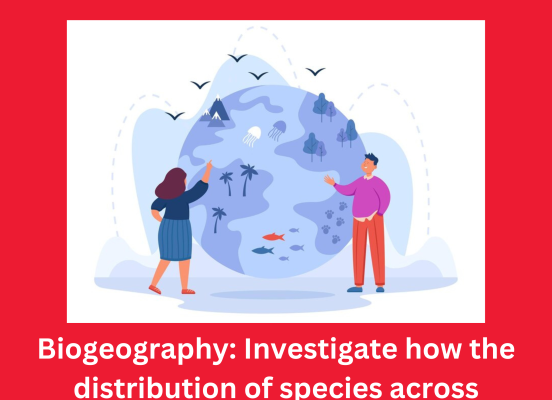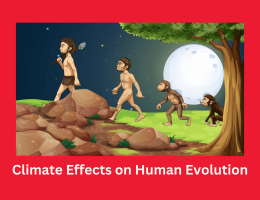
Biogeography: Investigate how the distribution of species across
- By admin --
- Monday, 11 Mar, 2024
Biogeography combines elements of geography, geology, and biology to offer a rich understanding of how species have spread through different parts of our planet. This serves as clear proof for evolution. By investigating the patterns of species distribution and the underlying environmental factors influencing them, biogeography unveils a captivating narrative of evolutionary processes shaping biodiversity.
The core concept of biogeography is that organisms are not dispersed randomly; rather, a variety of factors, including ecological interactions, physical obstacles, and historical events, determine their distribution.
The concept of vicariance states that the isolation of population by climatic or geological changes would eventually lead to species split, it is one of the most significant findings of biogeography. E.g., this aspect is demonstrated by continental drift which significantly affected life distribution on Earth.
Continental drift is a term used to explain how the Earth's continents migrate across geological time scales. It was first postulated by Alfred Wegener in the early 20th century and later validated by the theory of plate tectonics. The temperature, ocean currents, and habitat availability that arise from continents drifting apart or colliding influence creatures' evolutionary paths. Significant patterns of species distribution that can be linked to past continental configurations have been found through biogeographic investigations. supporting example, there is strong evidence supporting the ancient link between Africa and South America via the supercontinent Gondwana based on similarities in their flora and fauna.
Another intriguing facet of biogeography is island biogeography, which provides important insights into the processes behind species diversity on remote landmasses. Their distinct biological dynamics and just simple island ecosystems, make these natural laboratories perfect for studying evolutionary processes. Common knowledge about species richness and patterns of endemism on islands was formed thanks to such biologists as Edward O. Wilson, Robert macarthur and others. It is an idea that the diversity of species in islands is decided by how many animals migrate into and out of the island. Larger islands near to the mainlands usually have many types of different living things because animals move there all the time than smaller ones which never get visitors like this meme going around lately about how all the copper-tops have descended from one single mother cell.
Evolutionary change and the distribution of species are greatly influenced by migration, both historical and contemporary. Geographical barriers do not prevent organisms from moving across populations, which promotes gene flow and the possibility of genetic exchange and adaptation. At times when the sea levels were not as high, the Bering Land Bridge existed and this connected North America and Siberia thus easing the movement of animals and plants (Prothero, 2009). Current migrations due to human activity or climate change can change both species distribution and evolutionary patterns in receiving populations the same way as early migration CppMethodIntialized.
Technological and analytical developments, especially in the fields of molecular biology and geographic information systems (GIS), have completely changed the area of biogeography. Today, there has been a breakthrough in the current generation where phylogenetic relationships among organisms can be determined more accurately than ever before due to DNA sequence analysis that furthermore reveals dispersal routes as well as evolutionary pasts of respective organisms. Comparative genomics allows for the study of genetic adaptations to specific environments and the identification of genes associated with key ecological traits.
Moreover, the mapping of species distributions and the identification of regions with high biodiversity and conservation priority are made easier by GIS-based spatial studies. Such tools may assist scientists in evaluating how human-made disturbances such as habitat loss or climate alteration influence species’ ranges or even ecosystem functioning. For instance, genetic, ecological and geological data combined by biogeographers enable them comprehend how environmental factors are incorporated into evolutionary processes that shape biodiversity through distinct geographical scales and variations in time.
In conclusion, Examining the complex relationships between Earth's ecological processes, diversity of living forms, and geological past is made easier by using biogeography as a lens. Tawny-bellied honeyeaters are able to survive in the outback, because they have adapted to eating flowers from shrubs and small trees which are situated around gorges where water is available all year round and where these birds feed on nectar during dry periods.





